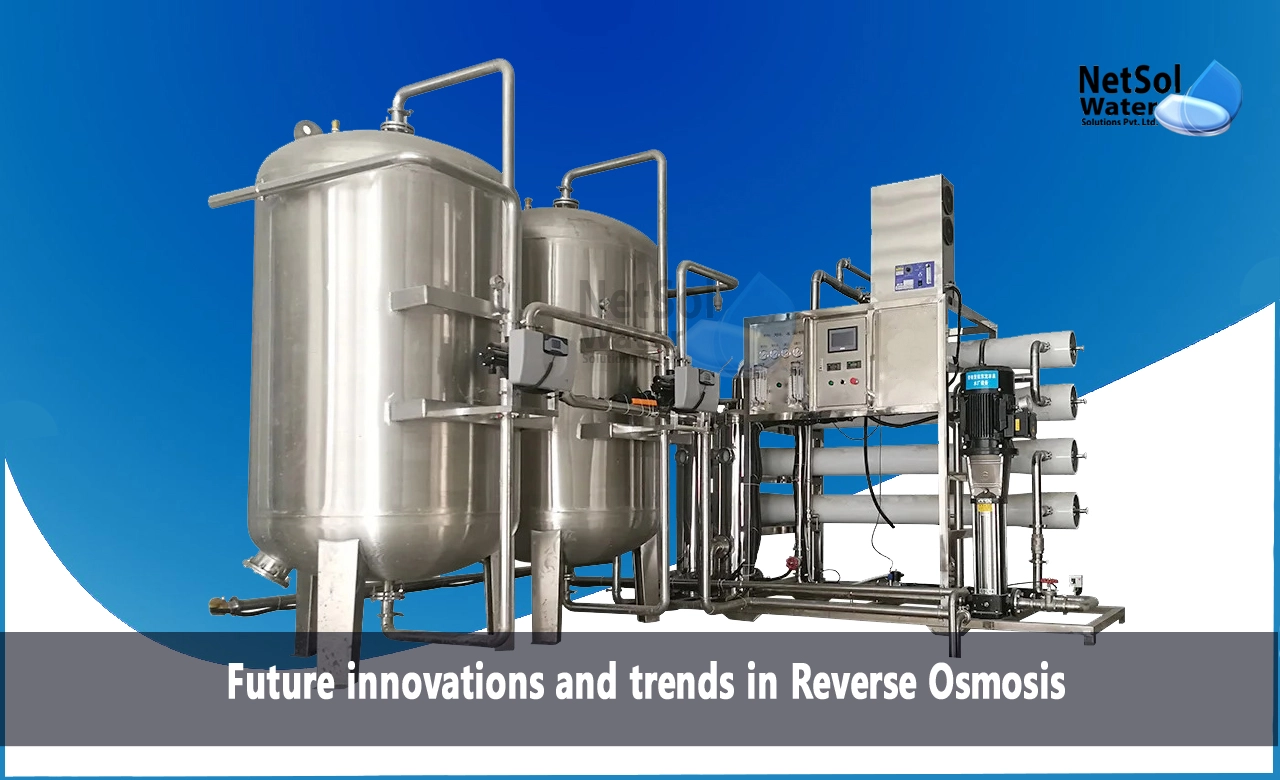What are the Future innovations and trends in RO Plant?
Reverse osmosis (RO) is the leading desalination technology for removing salts and impurities from water. RO is utilized extensively for drinking water purification, wastewater reclamation, and industrial process applications. However, classic single-pass RO is limited to 30-50% recovery on average. This results in copious wastewater volumes that complicate operations and carry environmental impacts.
In this article, we’ll explore emerging innovations set to revolutionize RO performance in the coming years. Multi-pass configurations, closed-loop recycling designs, and new membrane materials and module architectures will unlock unprecedented efficiency and recovery. We’ll also cover advances in concentrate treatment, renewable energy integration, and real-time monitoring. With insights into these cutting-edge trends, water professionals can prepare for the next generation of optimized, sustainable RO systems.
Innovations to Radically Increase RO Efficiency
Several novel RO system designs promise to boost recovery rates from 50% towards the theoretical limits of water chemistry:
- Closed-loop RO Recycling - Returning a portion of concentrate back to the system feed allows perpetual recovery improvement by concentrating salts.
- ERI/CEROTM - Engineered osmosis allows RO recycling up to 5 times in proprietary spiral-wound modules for 95%+ recovery.
- Pressure Retarded Osmosis - Using osmotic pressure differences to generate renewable power. Being combined with RO.
- Forward Osmosis - Salt from RO concentrate draws water across a membrane into a brine solution for recycling.
- Membrane Distillation - Thermal gradients drive water vapor across membranes for membrane distillation/RO hybrids.
- Osmotic MFO - Novel hollow fiber membranes concentrate brine within membrane lumens using osmosis.
- Electrodialysis Metathesis - Ion exchange membranes split RO concentrate into acid/base streams for reclamation.
Adopting these revolutionary new system designs will enable dramatic reductions in wastewater volumes and RO operational costs. Nextwe’ll look at advanced membrane materials on the horizon.
Cutting-Edge Membrane Materials and Manufacturing
- Nanomaterial membranes - Carbon nanotubes and graphene may enable sub-nanometer filtration and improve fouling resistance.
- Biomimetic membranes - Aquaporin proteins embedded in membranes self-assemble for fast water transport like cell membranes.
- Tunable membranes - Stimuli-responsive polymers alter permeability in response to light, heat or pH changes.
- Hybrid membranes - Mixed matrix materials combine polymers with nanoparticles for tailored selectivity.
- 3D printed membranes - Additive manufacturing allows complex membrane geometries impossible with casting.
- In situ crosslinking - Crosslinking polymerizes membrane selective layers directly on support material.
- Roll-to-roll fabrication - Mass producing membrane sheets like newspaper for low-cost production.
- Electrospinning - Uses electric fields to spin nanofiber membranes with extreme precision.
Realizing these materials and manufacturing advances in commercial membranes will enable higher permeabilities, targeted separations, and active control schemes. Next let’s examine progress in concentrate treatment.
Advances in Concentrate Treatment and Resource Recovery
- Waste-to-energy - Anaerobic digestion, gasification, pyrolysis, and incineration convert brine waste into fuel, electricity and heat.
- Nutrient recovery - Phosphorus, nitrates, and ammonia are extracted from concentrate using ion exchange or electrochemical methods.
- Mineral recovery - Selective sorbents recover lithium, uranium, and other valuable elements from brine.
- Salt recovery - Zero liquid discharge processes crystallize saleable sodium chloride and other salts.
- Seawater dilution - Discharging to oceans, engineered wetlands, and salt-tolerant habitats restores salts back naturally.
- Solar ponds - Layered high-salinity ponds harness solar thermal gradients for heat and power production.
- Desalination brine treatment - Applying dedicated desalination processes to RO concentrate streams for high recovery.
- Pressure-driven membrane distillation - Utilizing osmotic pressure instead of thermal gradients to treat challenging concentrates with MD.
Making full utilization of RO brine and limiting environmental impacts saves costs while unlocking new profit sources through resource recovery.
Trends in Monitoring, Automation and Control
- Remote monitoring and diagnostics - Cloud-connected systems enable 24/7 real-time tracking of performance.
- Predictive analytics - Machine learning models forecast membrane fouling and optimize operation early.
- Sensor networks - Wireless sensors monitor conductivity, pH, flow, pressure, etc. throughout systems.
- Automated valving - Software-scheduled dosing and diversion precisely directs flows.
- Adaptive control - Responding automatically to feed variations and quality fluctuations.
- Augmented reality interfaces - Technicians are guided through maintenance tasks remotely in real-time.
- Performance digital twins - Exact virtual models maximize uptime through simulation and forecasting.
- Electrocoagulation - Automated in situ cleaning prevents scale and biofilm directly on membranes.
- Energy optimization - Variable frequency pumps, motors, and drives minimize electrical costs.
Intelligent automation reduces staffing needs while optimizing energy and performance. It also enables inherent advantages of modular, flexible process intensification.
Conclusion
Established single-pass reverse osmosis will give way to radically more efficient multi-pass configurations through innovations in system design, membranes, monitoring, and automation.
Within 10 years, compact modular RO units will operate at over 90% recovery through closed-loop recycling, forward osmosis, and membrane distillation. Precision nanomaterials and nature-inspired membranes will significantly advance selectivity, throughput, and fouling resistance.
Meanwhile, real-time data analytics will enable predictive optimization and total remote control. And concentrate streams will be economically reclaimed for their energy, nutrient, and mineral value.
Together, these advances will transform RO water treatment into a distributed, sustainable process with unprecedented efficiency. Modular RO units will be deployed across industries from microchip fabrication to food and beverage production, serving both large and small users.
For water professionals seeking to adopt innovative technologies, partner with vendors and startups developing next generation RO systems. Attend academic and industry conferences covering desalination advances. And continually educate yourself and your team on the scientific possibilities expanding for one of humanity’s most vital resources – water.
Netsol Water is Greater Noida-based leading water & wastewater treatment plant manufacturer. We are industry's most demanding company based on client review and work quality. We are known as best commercial RO plant manufacturers, industrial RO plant manufacturer, sewage treatment plant manufacturer, Water Softener Plant Manufacturers and effluent treatment plant manufacturers. Apart from this 24x7 customer support is our USP. Call on +91-9650608473, or write us at enquiry@netsolwater.com for any support, inquiry or product-purchase related query.



